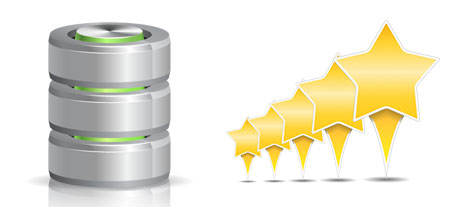For decades there was just one single reputable way to store info on a personal computer – utilizing a hard disk drive (HDD). However, this sort of technology is presently showing its age – hard disk drives are really noisy and sluggish; they’re power–hungry and frequently generate quite a lot of warmth throughout intensive operations.
SSD drives, in contrast, are really fast, take in far less energy and they are much cooler. They offer a new strategy to file accessibility and storage and are years in front of HDDs in terms of file read/write speed, I/O performance as well as power capability. Find out how HDDs fare up against the more recent SSD drives.
1. Access Time
Due to a revolutionary new approach to disk drive general performance, SSD drives enable for much faster file access rates. With an SSD, file access times are much lower (as small as 0.1 millisecond).
HDD drives depend on rotating disks for data storage purposes. Each time a file will be used, you will have to wait around for the correct disk to get to the correct place for the laser to access the data file you want. This translates into a typical access rate of 5 to 8 milliseconds.
2. Random I/O Performance
The random I/O performance is crucial for the overall performance of a data storage device. We have executed extensive testing and have identified an SSD can deal with at the least 6000 IO’s per second.
With an HDD drive, the I/O performance gradually improves the more you apply the hard drive. Nevertheless, right after it actually reaches a specific restriction, it can’t get faster. And because of the now–old concept, that I/O cap is noticeably lower than what you could get with a SSD.
HDD can only go as far as 400 IO’s per second.
3. Reliability
The absence of moving elements and spinning disks in SSD drives, as well as the recent advancements in electric interface technology have led to an extremely risk–free file storage device, with a typical failing rate of 0.5%.
To have an HDD drive to function, it should spin 2 metal hard disks at more than 7200 rpm, having them magnetically stabilized in the air. There is a good deal of moving components, motors, magnets and also other devices stuffed in a small location. So it’s no wonder that the regular rate of failure of any HDD drive ranges somewhere between 2% and 5%.
4. Energy Conservation
SSDs do not have moving elements and need not much cooling down power. Additionally, they demand a small amount of power to operate – lab tests have demonstrated that they’ll be operated by a regular AA battery.
As a whole, SSDs consume somewhere between 2 and 5 watts.
As soon as they were made, HDDs were always very electricity–hungry equipment. So when you have a hosting server with lots of HDD drives, this will certainly increase the month–to–month electricity bill.
Typically, HDDs use up somewhere between 6 and 15 watts.
5. CPU Power
As a result of SSD drives’ better I/O functionality, the leading server CPU can easily work with data file demands more rapidly and save time for additional functions.
The standard I/O wait for SSD drives is only 1%.
When using an HDD, you’ll have to devote additional time waiting around for the results of one’s data request. Because of this the CPU will continue to be idle for extra time, waiting around for the HDD to react.
The common I/O wait for HDD drives is approximately 7%.
6.Input/Output Request Times
The bulk of our brand–new web servers are now using simply SSD drives. Our own lab tests have established that with an SSD, the average service time for an I/O request although performing a backup stays below 20 ms.
Sticking with the same hosting server, yet this time furnished with HDDs, the outcome were different. The common service time for an I/O request changed between 400 and 500 ms.
7. Backup Rates
Discussing back ups and SSDs – we have noticed an effective development in the back–up speed as we transferred to SSDs. Today, a regular server back up will take simply 6 hours.
Throughout the years, we’ve employed mainly HDD drives on our machines and we are knowledgeable of their general performance. With a server designed with HDD drives, a complete hosting server backup often takes around 20 to 24 hours.
Our Linux website hosting packages accounts offer SSD drives automatically. Be a part of our Cenzion Star family, to see the way we can assist you to boost your web site.
Hepsia
- Live Demo
Service guarantees
- Our Virtual Private Servers include no installation rates and work in a steady network offering 99.9% of uptime. Full root access to the server guaranteed.
Compare our prices
- Review the allocations and features coming with Cenzion Star’s Virtual Private Servers. You could start with a smaller VPS Hosting configuration and move up with simply a click as your demands grow.
- Compare our hosting plans
Contact Us
- Our representatives are available for you 24x7 to answer all inquiries with regards to our VPS Hosting solutions. 1–hour response time frame guarantee.














